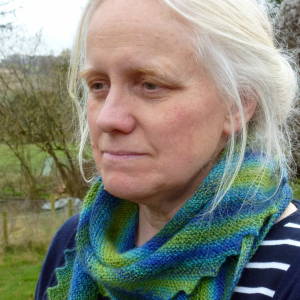New wheelchair
These are the only photos I took on Sunday, and I didn't originally intend to share them here. J wanted a couple of photos of her new wheelchair for a Facebook post, and I needed to send some close-ups to the communication aid service in advance of our appointment to replace the mount, which allows her to attach her communication aid to her wheelchair and move around with it. However, although the photos are just record shots, the process involved in a specialist wheelchair of this kind is quite complex and perhaps interesting.
J was diagnosed with quadriplegic cerebral palsy when she was about fifteen months old. By then she could not sit unsupported, and could weight bear through her legs only to a limited extent and with a lot of support. For several more years, she was pushed everywhere in her Silver Cross pushchair, a classic model which many people my age will remember: they were solid, could tilt in space and provided quite good sitting support. We continued to use it in its rear facing mode for a long time, to facilitate communication with J, who is also profoundly deaf and understands principally through sign language. Since she outgrew her pushchair, outings with her are punctuated by frequent pauses while I come to the front of her wheelchair whenever we want to talk about anything.
By the time she was about four she was outgrowing the pushchair. She then moved into a series of specialist buggies, designed for older children and incorporating elements of postural support, some better than others, and subsequently to a modular seating system which allowed a therapist to customise and adjust angles, lengths and levels of support in different areas. This worked well for some years, but was quite a rigid form of seating for someone sitting in a wheelchair all day, and J's increasingly difficult spasms and stiffness meant that she started to push and chafe involuntarily against it.
I think she was in her mid teens when her physiotherapist suggested that her next wheelchair should have a moulded seat. This means it is shaped around her body to support her comfortably in the best possible position. Such seats are only provided for people with complex postural support needs who really can't sit satisfactorily in anything else. To shape the mould, J is seated in a kind of large beanbag full of polystyrene beads supported on a wheelchair frame. Therapists then try to position her as optimally as possible, a slow, careful and often difficult process, pushing the bag into position around her before drawing out all the air so that the shaped bag became rigid. We have been through this process perhaps six or eight times: the first seats were outgrown and superseded relatively quickly as her body shape changed, but the one which has just been replaced was in use for nine years. These days the shaped bean bag is translated by 3D scanning into a digital file which can be used to control the machinery which cuts and shapes the foam. Some of J's earlier moulded seats were made using the traditional, messy method: the template was covered by several layers of fabric strips dipped in plaster of Paris. These dried into a firm mould in which to cast the seat.
The seat J received last week accommodates changes in her body shape arising from wider health issues she has experienced in recent years. It fits and supports her better and we hope may bring some modest improvements in some of the issues she has been experiencing. She is pleased with it and sits comfortably in it, though she is still disappointed at the loss of her "pink wheelchair" identity. As she explained in her short animation Unbound, made for BBC New Creatives in 2020-21, her wheelchair is not something in which she is "bound" or imprisoned, but the thing which supports and enables her to go out, travel, explore and experience the world, and as such it's part of her identity. I blipped about Unbound here when it was televised in December 2021.

Comments
Sign in or get an account to comment.


